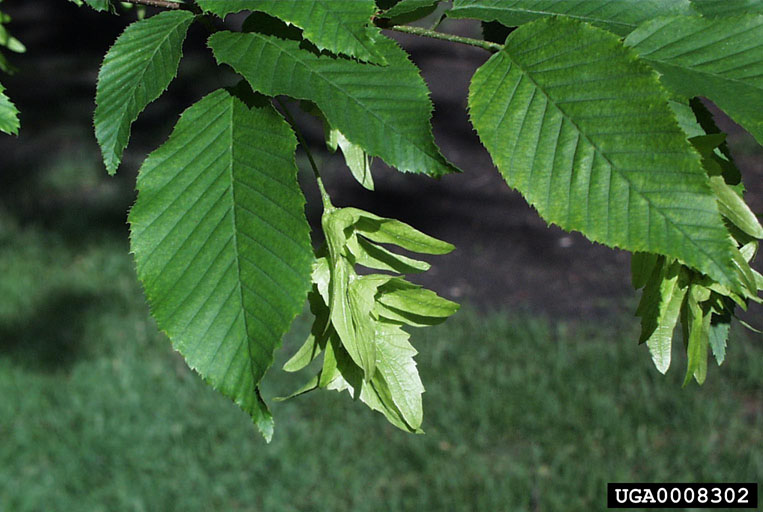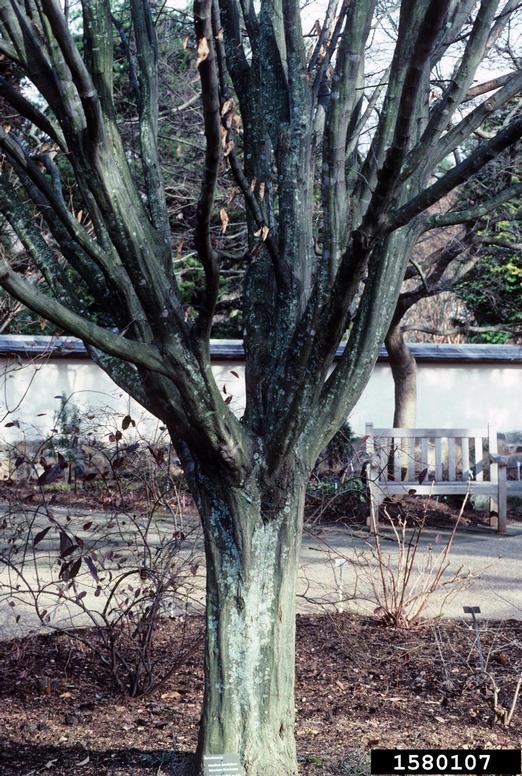It is April, we are finally getting into spring where more plants will start coming out of their dormancy and more color will show up in our landscapes. Last month I showcased Ponderosa Pine as the plant of the month because it is the Great Plants for the Great Plains selection for the 2016 evergreen of the year. I am going to continue through these plant selections from the Great Plains group and feature American Hornbeam for the April plant of the month as this is the 2016 selection for the tree of the year.
American Hornbeam, Carpinus caroliniana, is also called Blue Beech, Ironwood, Musclewood, and Water Beech. This medium-sized tree grows up to 20-25 feet in height and width and is often grown as an understory tree. It is called blue beech due to the smooth, gray-blue bark and it is called musclewood due to the muscle-like branches, which have irregular grooves throughout. According to Michael Dirr, the overall appearance is comparable to flexed biceps and the forearm muscles, hence the name musclewood. This tree has alternate leaves that are ovate-oblong and toothed along the margins. American Hornbeam flowers in April to May with multiple small, non-showy, flowers that appear in catkins before the leaves do. The fruit is a triangular, seed-like nutlet, enclosed in a hard, woody, four-lobed husk covered with bristles.
There are many different cultivars of American Hornbeam. Many of the cultivars are selected for improved fall color or form. Ball O’Fire is a more globular form of the straight species with an outstanding red fall color. Another good choice would be Firespire Musclewood, which is narrow and upright in growth with a nice orange-red fall color. There is also a unique, weeping variety called ‘Stowe Cascade’ American Hornbeam that grows up to 6-8 feet tall and then has arching branches for an interesting focal point to any landscape.
American Hornbeam is best grown as a specimen tree or in naturalized settings as an understory tree because it tolerates sun or shade. It tolerates wet soil and is adaptable to dry locations as well, making it easy to put into many landscaping situations. Canker is a common problem with this tree, which can cause dieback, but according to Michael Dirr, this is not a significantly serious problem.
Musclewood is a good choice for wildlife enthusiasts because the seeds, buds, and catkins are eaten by songbirds, pheasants, turkey, fox, and some squirrels. Deer and rabbits will eat the leaves and twigs, according the USDA NRCS. The USDA NRCS also states that the wood has been used for making small, hard, wooden object such as tool handles, levers, and bowls and dishes for the Pioneers.
American Hornbeam is a great tree for Nebraska because it was selected as the 2016 Great Plants for the Great Plains Tree of the Year. It is a tree that should be planted more in Nebraska and utilized as an understory tree or a specimen tree as it grows well in both sun and shade. It is also a great food choice for wildlife found in the area. So the next time you need a new understory tree or medium sized specimen tree, look to Musclewood.


